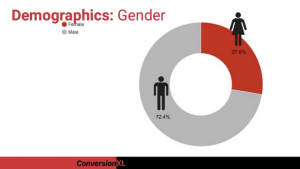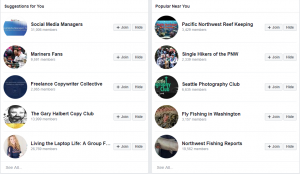Global communities around the world are taking the necessary measures to mitigate the spread of the COVID-19 outbreak. During these times of uncertainty, companies from all shapes and sizes are also struggling to keep themselves afloat.
Daniel Sun, a VP Analyst at global research and advisory firm Gartner, noted that “Companies need to leverage a systematic approach to strengthen the resilience of their current business models to ensure their ongoing operation during COVID-19.”
“CIOs can play a key role in this process since digital technologies and capabilities influence every aspect of business models,” he added.
Organizations are now scrambling to alleviate the impact of the global health crisis by considering how it will affect supply chain access, product launches, employee wellbeing, and of course, business continuity.
To say that 2020 is a unique time for digital marketers around the world is actually an understatement. There is no playbook for a health crisis such as the COVID-19 pandemic.
Google Marketing has shared Five Principles that guided their digital campaign in the wake of COVID-19:
PRINCIPLE 1: Context is always the key.
Organizations need to understand the local impact that a global pandemic has on its stakeholders. In other words, local context is the key to help the firm be more empathetic to the needs of its employees, along with the company’s other internal and external stakeholders.
This is especially crucial to MNCs and TNCs when there is a global mandate to evaluate and carry decisions based on the directives from the head office. Organizations like these need to trust that their country subsidiaries can make the best decision based on the needs of their local market. As such, general mandates are relayed from the head office, but the final decisions will be up to the local management team.
ASK YOURSELF: Is this campaign right, given the current context in a local market?
PRINCIPLE 2: Constant reassessment.
In cases such as a global health crisis, it is inevitable to experience rapid changes in market dynamics. Thus, constant reassessment of campaigns, creative collaterals, and even marketing guidelines is needed to keep up with the change.
Remember that decisions made two weeks ago are not necessarily appropriate today. Organizations must always be on the lookout to reassess every possible marketing aspect of their brand from paid and owned channels, such as video ads and even automated email messages.
ASK YOURSELF: Though we greenlit this campaign last month/last week/(April 21, 2020), is it still right for the context and moment?
PRINCIPLE 3: Consider creative considerations.
In line with the reassessment of marketing campaigns, all creative campaign elements of the brand must also be in constant scrutiny at this point. Organizations need to carefully evaluate their messaging – from the tone, visual imagery, copy, keywords, and media placements.
For instance, slapstick humor in marketing campaigns is not appropriate amidst the health crisis. Simple marketing decisions such as canceling the brand’s annual April Fools ad should be made ahead of time.
ASK YOURSELF: Are all of the creative elements — tone, copy, visuals, keywords, placements — appropriate and relevant to this new reality?
PRINCIPLE 4: Change priorities amidst uncertainties.
The management team has a responsibility to take the helm and navigate the organization in times of uncertainty. This is why they need to make the executive decision to evaluate their media budget and shift priorities towards the things that their consumers need during this time.
Organizations today need to have a mandate to be helpful in any way they can. Whether it’s for their employees or consumers, brands need to shift their digital marketing priorities towards particular advocacy that will help improve the lives of their consumers while they are staying at home under quarantine.
ASK YOURSELF: What are the most relevant brands, products, or campaigns our media can support right now, and do we need to shift budgets?
PRINCIPLE 5: Contribute and help at every opportunity.
Now more than ever, it is essential for members of the organization to come together and help one another. Organizations must think of creative and innovative ways to help their consumers, partners, and other stakeholders. Take a look at the brand’s digital assets and think of possible opportunities on how the brand can support advocacies, donate, or even amplify information dissemination.
ASK YOURSELF: What ways can our brand — and even our owned media channels — be helpful to people and businesses in this moment of need?
Guided by these principles, here are five ways to create a responsible digital marketing campaign in the wake of COVID-19:
TIP 1: Adjust marketing campaigns and reassess scheduled content timelines.
The first step that an organization needs to accomplish is to audit the digital content that is currently in the pipeline for the next few months by:
· Deciding what should be immediately put on hold.
Major brand launch campaigns need to be pushed back. This does not mean that the campaign should be canceled entirely just because several campaign elements are not appropriate in times of crisis. The campaign can resume once the outbreak subsides.
· Consider which campaigns to prioritize or pivot.
Be strategic in mapping out your organization’s digital marketing campaign in times of uncertainty brought by COVID-19. As such, consider moving some things up in the pipeline for the interim or look for some ways to help pivot messaging that can help in disseminating the health crisis response plan.
TIP 2: Carefully evaluate the brand’s imagery and language.
Visual communication is a powerful tool, especially in times of uncertainty. Be mindful of the brand’s message by:
· Avoiding visuals of crowds that do not promote social distancing.
This includes images of people working and huddled together in the office or social gathering of families out of their homes.
· Rephrase marketing messages that connote close interactions.
Even figurative languages such as “get in touch” or “work hand-in-hand” may be deemed inappropriate, and it can be deeply scrutinized by consumers.
TIP 3: Don’t capitalize on the crisis.
In any kind of tragedy or crisis, it’s important to remember that organizations should not profit from the market’s anxieties and fear. Here’s how you can do it right:
· Keep stakeholders informed.
Brands need to actively communicate with their stakeholders in times of crisis. Relay proactive measures and inform consumers about the organization’s COVID-19 response plan as promptly as possible.
· Don’t be an alarmist.
While keeping people informed is necessary, it’s also important that organizations do not add to the panic. Be mindful of the brand’s messaging and avoid overly dramatic language that will only add to the consumer’s anxieties.
TIP 4: Be positive, but do not be ignorant.
People naturally become uneasy during a health crisis. Organizations do not need to feed into that negativity with a grim and harsh tone. Here’s what you can do instead:
· Look into your brand’s core values for guidance.
Use your organization’s core values to remind yourself what your brand stands for. Let your brand’s core principles set the tone on how you will connect and speak to your audience.
· Be human.
Avoid sending perfunctory and robotic messages during a health crisis. The organization does not need to strip the brand of its personality just because there’s a crisis. Remember that organizations can still offer well wishes and good vibes without being offensive or insensitive.
TIP 5: Highlight how your brand can help.
Brands exist to provide value to its consumers. Tell stories about the brand that can enhance the lives of consumers while they are on quarantine by:
· Communicating your benefits.
Tell a story on how your brand can share its potential value in times of crisis.
· Creating helpful content.
Even if your brand does not directly help people while they are on quarantine, you can still create immersive content that can entertain, educate, and inspire people while they are at home.
Google’s search data reveals insights on several best practices that brands do to help during the COVID-19 pandemic:
BEST PRACTICE 1: Addressing customer concerns.
Cottonelle
With the rampant toilet paper hoarding all over the world, Cottonelle delivered a message to ease the concerns of consumers and discourage people from hoarding and panic buying. The company encouraged people to “Stock up on generosity” and launched a charity campaign called #ShareASquare.
McDonald’s Philippines
McDonald’s Philippines CEO Kenneth Yang delivered a video message to directly address the heightened concerns about the health and safety of their consumers. The company understood the urgency of reaching its audience in a timely manner in order to dispel rumors and avoid panic. CEO Kenneth Yang assured customers, “We will not hesitate to cancel any customer activity or even temporarily shut down any of our restaurants.”
BEST PRACTICE 2: Pivoting towards a solution.
Ford
As a global brand that has been around for more than a century, Ford acknowledged the gravity of the global health crisis and explained how their company had weathered its share of dire situations. To share their resilient culture, the ad announced the Ford Credit payment relief program for its consumers.
Walgreens
As one of the largest pharmacies in the United States, Walgreens is doing its part to provide health care aid. With their informative Ask a Pharmacist video, Walgreens is helping its consumers by answering questions related to COVID-19. They also started a drive-thru testing initiative for first responders.
BEST PRACTICE 3: Bringing people together as they stay apart.
Ikea
Instead of being anxious while suffering from cabin fever in quarantine, Ikea Spain saw an opportunity to shift the perspectives of their consumers by welcoming them back into their homes with the #YoMeQuedoEnCasa (#I’mStayingHome) campaign.
Guinness
While St. Patrick’s Day is usually a day of celebration for Irish brand Guinness, they recognized that celebrating this holiday will be quite different this year. The company also announced its $ 1 million commitment to the Guinness Gives Back Fund to support its local community and hospitality workers.
References:
Crisis marketing: How brands are addressing the coronavirus. (2020). Think with Google. Retrieved 9 April 2020, from https://bre.is/vPpKzCtr
Inside Google Marketing: 5 principles guiding our media teams in the wake of the COVID-19 outbreak. (2020). Think with Google. Retrieved 9 April 2020, from https://bre.is/z7uCBNbd
Panetta, K. (2020). Create a Resilient Business Model in the Face of COVID-19. Gartner.com. Retrieved 9 April 2020, from https://www.gartner.com/smarterwithgartner/create-a-resilient-business-model-in-the-face-of-covid-19/
Rumack, A. (2020). 5 Ways to Do Smart & Responsible Marketing During COVID-19. Retrieved April 11, 2020, from https://www.business2community.com/marketing/5-ways-to-do-smart-responsible-marketing-during-covid-19-02295026
Digital & Social Articles on Business 2 Community
(48)







